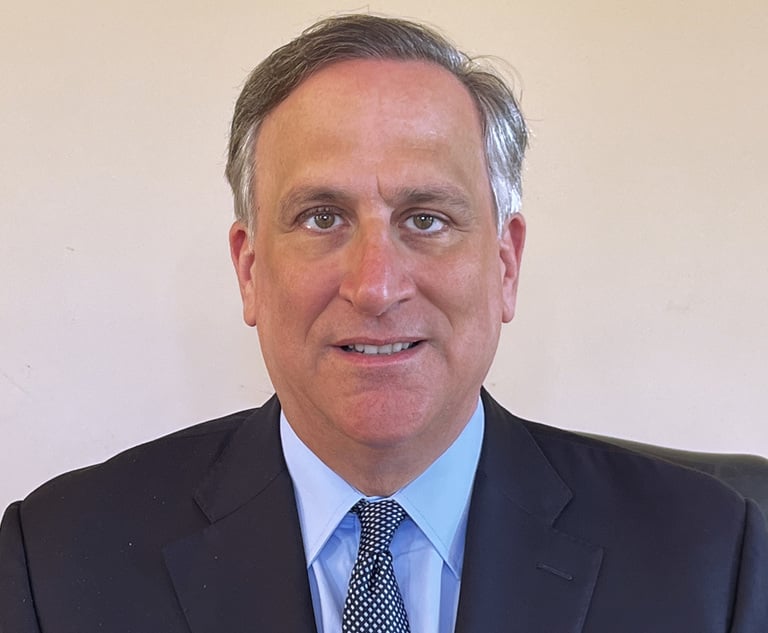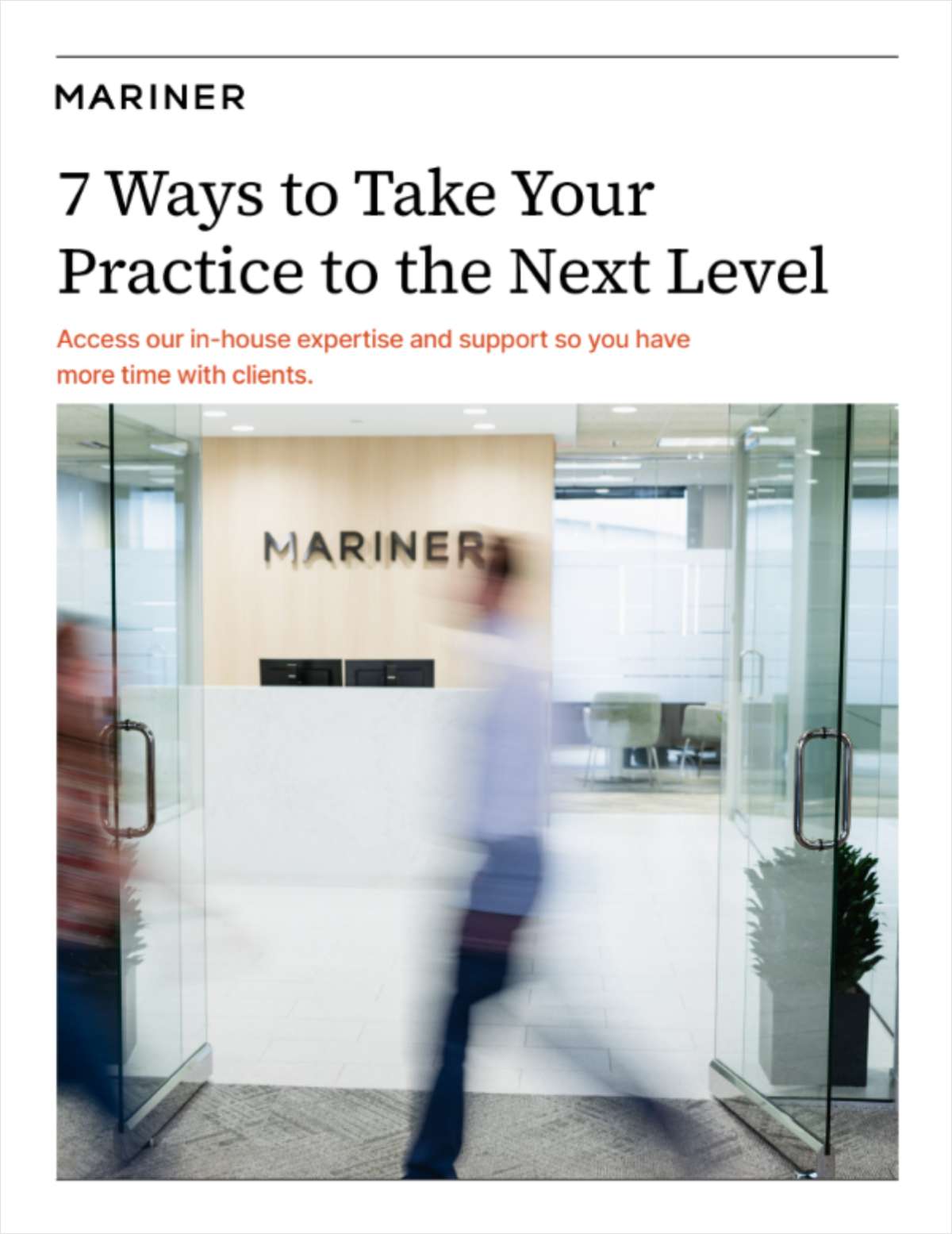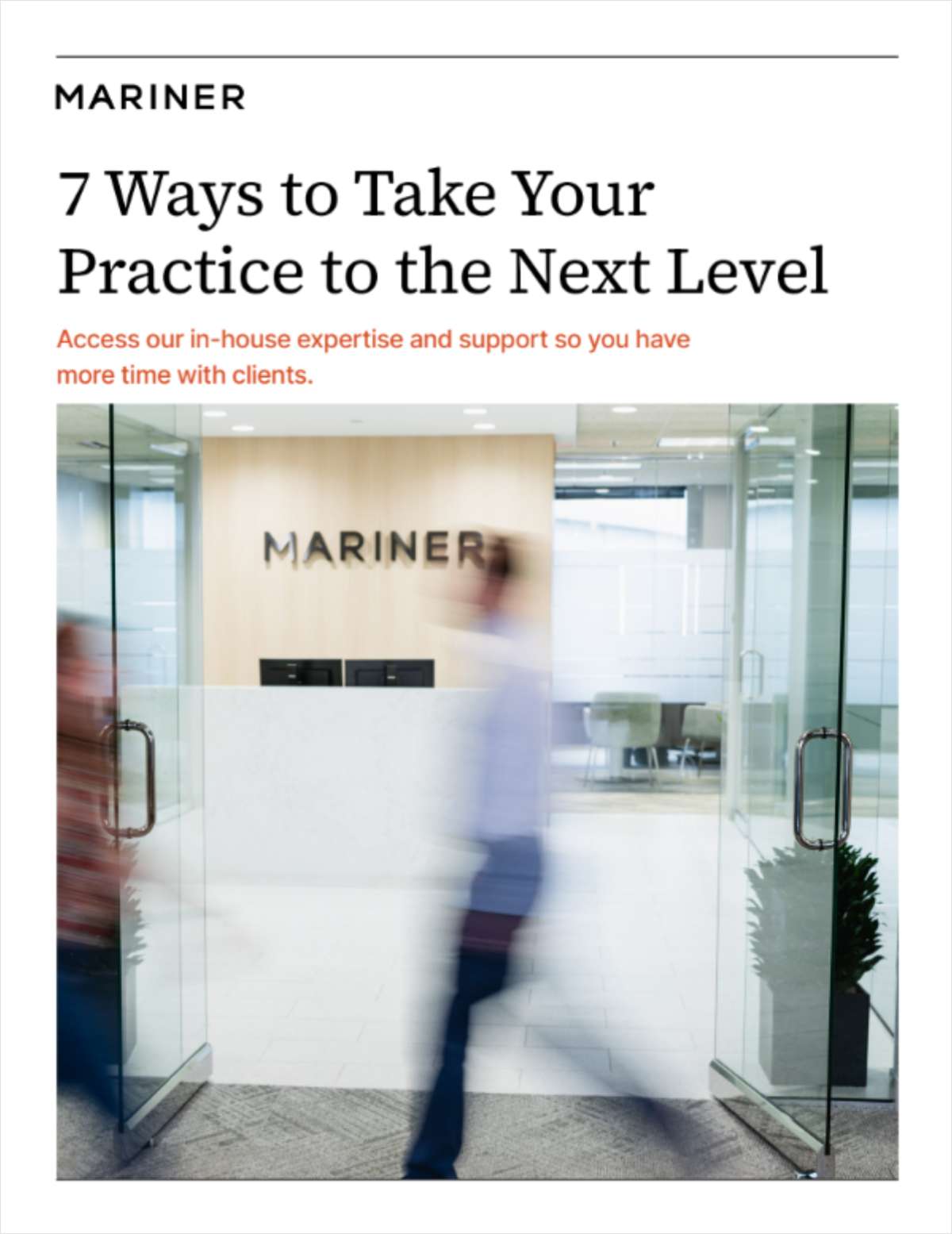Viewpoint: Connecticut Law Firms Should Consider the Mansfield Rule
While it may be near impossible to completely eradicate racism and sexism, if we don't call attention to, and acknowledge, our internalized and institutionalized prejudices, nothing will ever change.
November 16, 2017 at 01:26 PM
12 minute read
 This past summer, some 30 to 40 American law firms partnered with Diversity Lab to implement a pilot program adopting the Mansfield Rule in an effort to promote diversity in their leadership. Named after Arabella Mansfield, the first female attorney to be admitted to practice law in the United States, the Mansfield Rule requires that 30 percent of the candidates considered for leadership positions and promotions at a given law firm be women or minorities.
This past summer, some 30 to 40 American law firms partnered with Diversity Lab to implement a pilot program adopting the Mansfield Rule in an effort to promote diversity in their leadership. Named after Arabella Mansfield, the first female attorney to be admitted to practice law in the United States, the Mansfield Rule requires that 30 percent of the candidates considered for leadership positions and promotions at a given law firm be women or minorities.
This rule is derived from the NFL's Rooney Rule, named after the late Dan Rooney, former owner of the Pittsburgh Steelers, which requires that each NFL team must interview at least one minority candidate for the position of head coach. Although no one diversity program is going to single-handedly correct the sexism and racism that has existed in law firms and legal departments for more than a century, the Mansfield Rule could help Connecticut law firms make significant strides in the right direction.
The goal of promoting diversity is not new. There have been numerous programs implemented over the years in various institutions with the intention of increasing the number of minorities and women in higher education programs and in the workforce. But do these programs actually work? Do they emphasize gender and race rather than an individual's qualifications? Do they function as marketing or propaganda for companies to advertise themselves as “diverse” when, in reality, nothing has changed? These types of questions are undoubtedly raised by the cynic in all of us.
Perhaps the only answer to these kinds of controversial questions is that there is no definitive answer. It's difficult to say that adopting the Mansfield Rule is the best or “correct” way to address institutional racism/sexism, and it's also difficult to say whether the Mansfield Rule will actually increase the number of women and minorities hired for leadership positions in law firms. After all, the rule only requires that law firms consider a certain percentage of women/minority candidates — law firms still have the discretion to hire whoever they want.
With all this in mind, should we just dismiss this Mansfield Rule movement as another hopeless endeavor, or at worst a publicity stunt? We would posit, no. This recent diversity movement in the legal field, whether it makes an immediate impact or not, is important to addressing the roots of the perhaps less socially provocative, yet equally potent form of sexism and racism that lurks within each of our subconscious minds.
The sad truth is we all have biases based on race and gender, even if we're not consciously aware of them. We are hardwired to make assumptions based on our perception of certain characteristics in our environment and in other people. We make associations based on what a person looks like, and what their ethnic heritage is, even if we don't intend to. This bias may become more pronounced in the hiring process, which inherently requires us to make judgments about other individuals based on limited information. Having to judge other people in turn inherently requires us to rely on our preconceived notions about people in general, including our ingrained assumptions based on ethnicity and upbringing. Even the most well-intentioned individuals fall victim to these biases.
This is where the Mansfield Rule comes into play. It combats unconscious racial and gender biases, and studies have suggested that instituting policies such as the Mansfield Rule is effective in increasing the number of women and minorities in leadership positions. A trio of studies conducted by Dr. Stefanie Johnson and Dr. David Hekman suggested that when the number of female candidates in a given hiring pool is two or more, it is significantly more likely that a female will be hired. This increase was beyond what could be associated with simple probabilities. Similarly, the results suggested that the inclusion of at least two minority candidates made it significantly more likely that a minority would be hired.
As explained in the article published by Johnson and Hekman in the Harvard Business Review, one reason why the inclusion of two female or minority candidates is effective may be because it pits our “status quo” bias against our racial and gender biases. Our preference for hiring white male leaders may be explained not only by our unconscious racial and gender biases, but also by our bias in favor of keeping the status quo. Because people tend to prefer preserving the status quo, they unconsciously prefer to hire leaders who fit the norm. In the context of law firms (as well as most companies in general), the norm is for the managing partner or CEO to be a white male.
Therefore, when a candidate pool includes at least two females or minorities, our unconscious perception of what the status quo is changes. Effectively, because we perceive female or minority candidates as part of the “norm,” we are more likely to hire them. Interestingly, the studies found that increasing the number of women or minorities beyond two did not appear to increase the probability of hiring a female or minority candidate. The real game changer was the increase of female or minority candidates from one to two. When there was only one female or minority candidate in the finalist pool, there was virtually no chance that such candidate would be chosen.
Thus, the suggestion is that initiatives such as the Mansfield Rule are particularly effective at combating unconscious racism and sexism because they subconsciously change our perception of the status quo, and use our bias in favor the status quo to overcome our tendencies to ignore or undervalue female and minority candidates. However, in addition to perhaps using our unconscious biases to change the status quo, we also believe that the Mansfield Rule encourages us to consciously acknowledge our internalized racial and gender biases and make deliberate efforts to overcome those biases. In our view, it is this call to consciously examine who we hire and promote—and who we consider as leaders—that make initiatives like the Mansfield Rule so significant, regardless of whether it produces immediate, tangible changes.
While it may be near impossible to completely eradicate racism and sexism, if we don't call attention to, and acknowledge, our internalized and institutionalized prejudices, nothing will ever change. Thus, while there is no magic solution to institutionalized racism and sexism in Connecticut law firms and legal departments, adopting initiatives such as the Mansfield Rule will help the Connecticut legal community make significant steps toward equality and fairness — goals which we as lawyers strive to achieve.
 This past summer, some 30 to 40 American law firms partnered with Diversity Lab to implement a pilot program adopting the Mansfield Rule in an effort to promote diversity in their leadership. Named after Arabella Mansfield, the first female attorney to be admitted to practice law in the United States, the Mansfield Rule requires that 30 percent of the candidates considered for leadership positions and promotions at a given law firm be women or minorities.
This past summer, some 30 to 40 American law firms partnered with Diversity Lab to implement a pilot program adopting the Mansfield Rule in an effort to promote diversity in their leadership. Named after Arabella Mansfield, the first female attorney to be admitted to practice law in the United States, the Mansfield Rule requires that 30 percent of the candidates considered for leadership positions and promotions at a given law firm be women or minorities.
This rule is derived from the NFL's Rooney Rule, named after the late Dan Rooney, former owner of the Pittsburgh Steelers, which requires that each NFL team must interview at least one minority candidate for the position of head coach. Although no one diversity program is going to single-handedly correct the sexism and racism that has existed in law firms and legal departments for more than a century, the Mansfield Rule could help Connecticut law firms make significant strides in the right direction.
The goal of promoting diversity is not new. There have been numerous programs implemented over the years in various institutions with the intention of increasing the number of minorities and women in higher education programs and in the workforce. But do these programs actually work? Do they emphasize gender and race rather than an individual's qualifications? Do they function as marketing or propaganda for companies to advertise themselves as “diverse” when, in reality, nothing has changed? These types of questions are undoubtedly raised by the cynic in all of us.
Perhaps the only answer to these kinds of controversial questions is that there is no definitive answer. It's difficult to say that adopting the Mansfield Rule is the best or “correct” way to address institutional racism/sexism, and it's also difficult to say whether the Mansfield Rule will actually increase the number of women and minorities hired for leadership positions in law firms. After all, the rule only requires that law firms consider a certain percentage of women/minority candidates — law firms still have the discretion to hire whoever they want.
With all this in mind, should we just dismiss this Mansfield Rule movement as another hopeless endeavor, or at worst a publicity stunt? We would posit, no. This recent diversity movement in the legal field, whether it makes an immediate impact or not, is important to addressing the roots of the perhaps less socially provocative, yet equally potent form of sexism and racism that lurks within each of our subconscious minds.
The sad truth is we all have biases based on race and gender, even if we're not consciously aware of them. We are hardwired to make assumptions based on our perception of certain characteristics in our environment and in other people. We make associations based on what a person looks like, and what their ethnic heritage is, even if we don't intend to. This bias may become more pronounced in the hiring process, which inherently requires us to make judgments about other individuals based on limited information. Having to judge other people in turn inherently requires us to rely on our preconceived notions about people in general, including our ingrained assumptions based on ethnicity and upbringing. Even the most well-intentioned individuals fall victim to these biases.
This is where the Mansfield Rule comes into play. It combats unconscious racial and gender biases, and studies have suggested that instituting policies such as the Mansfield Rule is effective in increasing the number of women and minorities in leadership positions. A trio of studies conducted by Dr. Stefanie Johnson and Dr. David Hekman suggested that when the number of female candidates in a given hiring pool is two or more, it is significantly more likely that a female will be hired. This increase was beyond what could be associated with simple probabilities. Similarly, the results suggested that the inclusion of at least two minority candidates made it significantly more likely that a minority would be hired.
As explained in the article published by Johnson and Hekman in the Harvard Business Review, one reason why the inclusion of two female or minority candidates is effective may be because it pits our “status quo” bias against our racial and gender biases. Our preference for hiring white male leaders may be explained not only by our unconscious racial and gender biases, but also by our bias in favor of keeping the status quo. Because people tend to prefer preserving the status quo, they unconsciously prefer to hire leaders who fit the norm. In the context of law firms (as well as most companies in general), the norm is for the managing partner or CEO to be a white male.
Therefore, when a candidate pool includes at least two females or minorities, our unconscious perception of what the status quo is changes. Effectively, because we perceive female or minority candidates as part of the “norm,” we are more likely to hire them. Interestingly, the studies found that increasing the number of women or minorities beyond two did not appear to increase the probability of hiring a female or minority candidate. The real game changer was the increase of female or minority candidates from one to two. When there was only one female or minority candidate in the finalist pool, there was virtually no chance that such candidate would be chosen.
Thus, the suggestion is that initiatives such as the Mansfield Rule are particularly effective at combating unconscious racism and sexism because they subconsciously change our perception of the status quo, and use our bias in favor the status quo to overcome our tendencies to ignore or undervalue female and minority candidates. However, in addition to perhaps using our unconscious biases to change the status quo, we also believe that the Mansfield Rule encourages us to consciously acknowledge our internalized racial and gender biases and make deliberate efforts to overcome those biases. In our view, it is this call to consciously examine who we hire and promote—and who we consider as leaders—that make initiatives like the Mansfield Rule so significant, regardless of whether it produces immediate, tangible changes.
While it may be near impossible to completely eradicate racism and sexism, if we don't call attention to, and acknowledge, our internalized and institutionalized prejudices, nothing will ever change. Thus, while there is no magic solution to institutionalized racism and sexism in Connecticut law firms and legal departments, adopting initiatives such as the Mansfield Rule will help the Connecticut legal community make significant steps toward equality and fairness — goals which we as lawyers strive to achieve.
This content has been archived. It is available through our partners, LexisNexis® and Bloomberg Law.
To view this content, please continue to their sites.
Not a Lexis Subscriber?
Subscribe Now
Not a Bloomberg Law Subscriber?
Subscribe Now
NOT FOR REPRINT
© 2025 ALM Global, LLC, All Rights Reserved. Request academic re-use from www.copyright.com. All other uses, submit a request to [email protected]. For more information visit Asset & Logo Licensing.
You Might Like
View All
ADVANCE Act Offers Conn. Opportunity to Enhance Carbon-Free Energy and Improve Reliability With Advanced Nuclear Technologies

Trending Stories
- 1The Fearless Forecaster’s Employment Law Predictions for 2025
- 2Judicial Conference Declines Democratic Request to Refer Justice Thomas to DOJ
- 3People in the News—Jan. 2, 2025—Eastburn and Gray, Klehr Harrison
- 4Deal Watch: Latham, Paul Weiss, Debevoise Land on Year-End Big Deals. Plus, Mixed Messages for 2025 M&A
- 5Bathroom Recording Leads to Lawyer's Disbarment: Disciplinary Roundup
Who Got The Work
Michael G. Bongiorno, Andrew Scott Dulberg and Elizabeth E. Driscoll from Wilmer Cutler Pickering Hale and Dorr have stepped in to represent Symbotic Inc., an A.I.-enabled technology platform that focuses on increasing supply chain efficiency, and other defendants in a pending shareholder derivative lawsuit. The case, filed Oct. 2 in Massachusetts District Court by the Brown Law Firm on behalf of Stephen Austen, accuses certain officers and directors of misleading investors in regard to Symbotic's potential for margin growth by failing to disclose that the company was not equipped to timely deploy its systems or manage expenses through project delays. The case, assigned to U.S. District Judge Nathaniel M. Gorton, is 1:24-cv-12522, Austen v. Cohen et al.
Who Got The Work
Edmund Polubinski and Marie Killmond of Davis Polk & Wardwell have entered appearances for data platform software development company MongoDB and other defendants in a pending shareholder derivative lawsuit. The action, filed Oct. 7 in New York Southern District Court by the Brown Law Firm, accuses the company's directors and/or officers of falsely expressing confidence in the company’s restructuring of its sales incentive plan and downplaying the severity of decreases in its upfront commitments. The case is 1:24-cv-07594, Roy v. Ittycheria et al.
Who Got The Work
Amy O. Bruchs and Kurt F. Ellison of Michael Best & Friedrich have entered appearances for Epic Systems Corp. in a pending employment discrimination lawsuit. The suit was filed Sept. 7 in Wisconsin Western District Court by Levine Eisberner LLC and Siri & Glimstad on behalf of a project manager who claims that he was wrongfully terminated after applying for a religious exemption to the defendant's COVID-19 vaccine mandate. The case, assigned to U.S. Magistrate Judge Anita Marie Boor, is 3:24-cv-00630, Secker, Nathan v. Epic Systems Corporation.
Who Got The Work
David X. Sullivan, Thomas J. Finn and Gregory A. Hall from McCarter & English have entered appearances for Sunrun Installation Services in a pending civil rights lawsuit. The complaint was filed Sept. 4 in Connecticut District Court by attorney Robert M. Berke on behalf of former employee George Edward Steins, who was arrested and charged with employing an unregistered home improvement salesperson. The complaint alleges that had Sunrun informed the Connecticut Department of Consumer Protection that the plaintiff's employment had ended in 2017 and that he no longer held Sunrun's home improvement contractor license, he would not have been hit with charges, which were dismissed in May 2024. The case, assigned to U.S. District Judge Jeffrey A. Meyer, is 3:24-cv-01423, Steins v. Sunrun, Inc. et al.
Who Got The Work
Greenberg Traurig shareholder Joshua L. Raskin has entered an appearance for boohoo.com UK Ltd. in a pending patent infringement lawsuit. The suit, filed Sept. 3 in Texas Eastern District Court by Rozier Hardt McDonough on behalf of Alto Dynamics, asserts five patents related to an online shopping platform. The case, assigned to U.S. District Judge Rodney Gilstrap, is 2:24-cv-00719, Alto Dynamics, LLC v. boohoo.com UK Limited.
Featured Firms
Law Offices of Gary Martin Hays & Associates, P.C.
(470) 294-1674
Law Offices of Mark E. Salomone
(857) 444-6468
Smith & Hassler
(713) 739-1250












